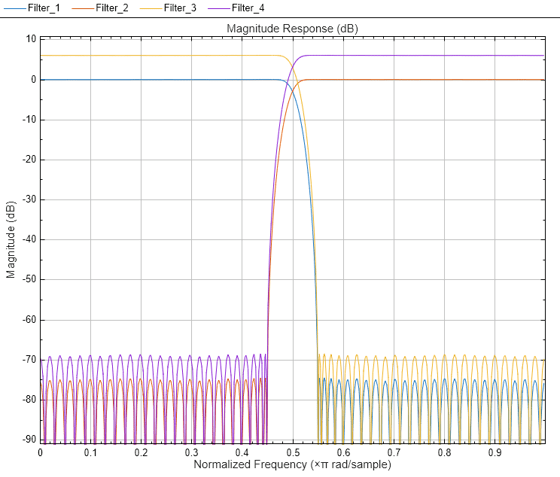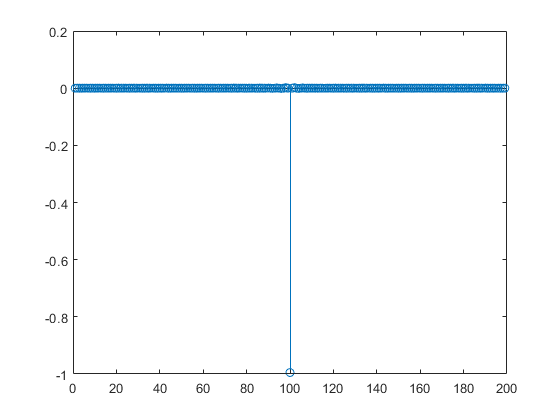firpr2chfb
Two-channel FIR filter bank for perfect reconstruction
Syntax
[h0,h1,g0,g1] = firpr2chfb(n,fp)
[h0,h1,g0,g1] = firpr2chfb(n,dev,'dev')
[h0,h1,g0,g1] = firpr2chfb('minorder',fp,dev)
Description
[h0,h1,g0,g1] = firpr2chfb(n,fp) designs
four FIR filters for the analysis sections (h0 and h1)
and synthesis section is (g0 and g1)
of a two-channel perfect reconstruction filter bank. The design corresponds
to the orthogonal filter banks also known as power-symmetric filter
banks.
n is the order of all four filters. It must
be an odd integer. fp is the passband-edge for
the lowpass filters h0 and g0.
The passband-edge argument fp must be less than
0.5. h1 and g1 are highpass
filters with the passband-edge given by (1-fp).
[h0,h1,g0,g1] = firpr2chfb(n,dev,'dev') designs the four filters such
that the maximum stopband ripple of h0 is given
by the scalar dev. Specify dev in
linear units, not decibels. The stopband-ripple of h1 is
also be given by dev, while the maximum stopband-ripple
for both g0 and g1 is (2*dev).
[h0,h1,g0,g1] = firpr2chfb('minorder',fp,dev) designs the four
filters such that h0 meets the passband-edge specification fp and
the stopband-ripple dev using minimum order filters
to meet the specification.
Examples
Extended Capabilities
Version History
Introduced in R2011a
See Also
firceqrip | firgr | firnyquist

